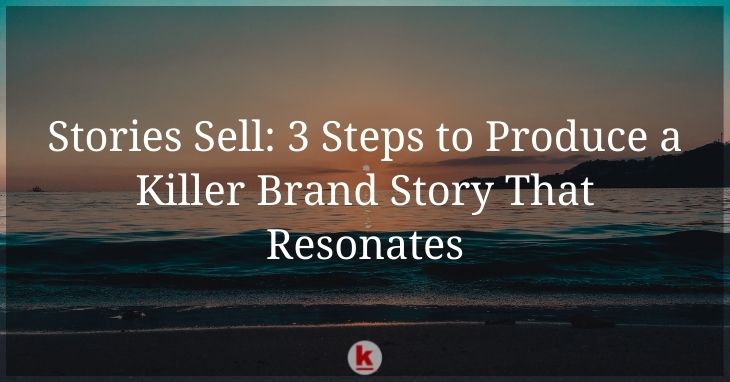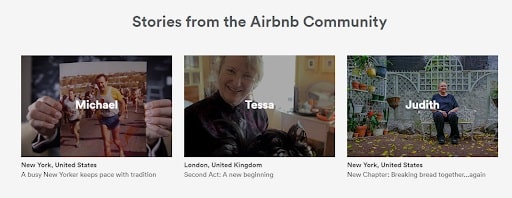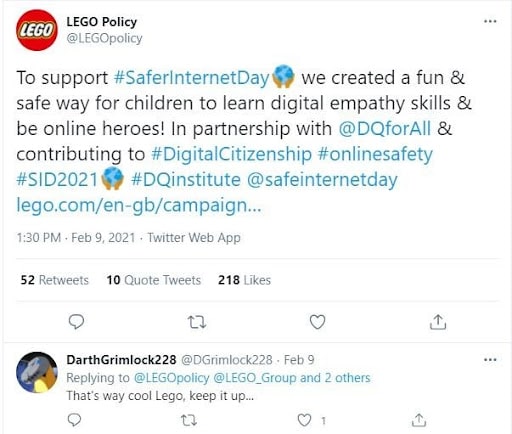
Stories Sell: 3 Steps to Produce a Killer Brand Story That Resonates

Everyone loves a good story. And that is why stories drive conversions and ROI when it comes to marketing.
As per a study, if consumers love a story that brand shares, 55% are more likely to purchase the product in the future, 44% will share the brand’s story, and 15% will purchase the product right away.
That’s the power of brand storytelling. Stories are known to increase consumers’ emotional attachment to your brand and their uniqueness can make your brand stand out.
Your aim of brand storytelling should thus be not merely to drive people to make a purchase, but also to gain their loyalty and support.
To help you leverage the benefit, here are steps to produce a killer brand story that resonates.
- Begin with “why.”
A brand does not exist without a reason. You are here because you are concerned about a certain issue or a pain point. And you want to offer a solution through your products or services.
Ask yourself why your business exists until you find out your real driving factor. You can then incorporate the answer in your story.
People are not going to buy what you do. Instead, they will buy why you do it.
If you look at the TOMS shoe brand, they use their story as a foundation for its existence. The brand has a tagline, “One for one.” Whenever a customer purchases a pair of shoes from TOMS, they give a pair to someone in need. This brand exists to better the lives of people.

This kind of brand story will build trust as careful customers are always asking why they should purchase from you.
- Promote the experience instead of product
In order for your brand story to convert, you need characters your audience will relate to and support. But it doesn’t mean you have to create fictional characters.
Add human elements so that your audience can emotionally connect. It will make them more interested in following your story.
Just like the well-established brands, including Nike, Apple, and Airbnb, you should be able to sell the experience that your brand is promising instead of the product.
If you look at Airbnb, the online marketplace allows homeowners to offer their property for rent. And travelers looking for a place to stay can visit the website to book a stay within a couple of minutes.
What is unique about the brand is that they allow experiences to tell the story of the places people visit. They have a dedicated section named Stories from the Airbnb Community, where travelers share their experiences.

Also, while conducting Belong Anywhere rebrand and campaign, Airbnb made use of images and short films to showcase a clear picture of the lives of Airbnb hosts and what a guest could expect a stay with the hosts to be like.
This practice works as it not only helps customers to build a connection with the brand but also solves their pain points of using a service as such. The stories provide answers to questions like “With whom will I be staying with?” and “What will the experience be like?”.
The stories remove the fear and anxiety steered up by uncertainty from the travelers’ minds. Their short films and imagery showcases the hosts as ordinary and interesting people and put the travelers’ mind at ease.
- Corporate Social Responsibility storytelling
Millennials, Gen Z, and younger people are more socially aware. If you look at the statistics, 63% of Gen Z customers are more likely to purchase from companies that are socially responsible.
If you are targeting this audience, you can showcase your CSR in a storytelling layout. It will kill two birds with one stone. While exposing your work, you can also tap you’re your consumer emotions.
Here’s an excellent example of CSR storytelling from the LEGO brand. Their #SaferInternetDay campaign aimed to aid children in building online empathy skills and become online heroes.
First, the brand organized a quiz, which was hosted by a character named Mr. Safety. It created digital situation children might be familiar with that told the story of online bullying.
While taking the quiz, the children had to select what they would do in case they come across a mean online behavior. This technique is interactive as well as engaging.

Another of the campaign’s features was Captain Safety’s Online Heroes. They explained the roles of each hero with digital content, helping kids relate to the story.
When you are doing CSR storytelling, you should you’re your target audience so that your story resonates with them. LEGO brand employed plenty of colors and incorporated a video as well as an interactive element. Their video was short and thus was able to maintain focus and interest.
Wrap-Up
Reaching customers in today’s competitive advertising marketplace can be challenging. Create a unique brand story that resonates and makes you stand out by showing why your brand exists, promoting experience, and showcasing your CSR in a storytelling layout.
Aanya Rachel is the Content Manager at The Address coworking space in Vadodara, Gujarat. She is passionate about sharing her knowledge, experience, and extensive research in this field. She writes on a wide range of topics related to coworking, growth of remote workers, startups and real estate.